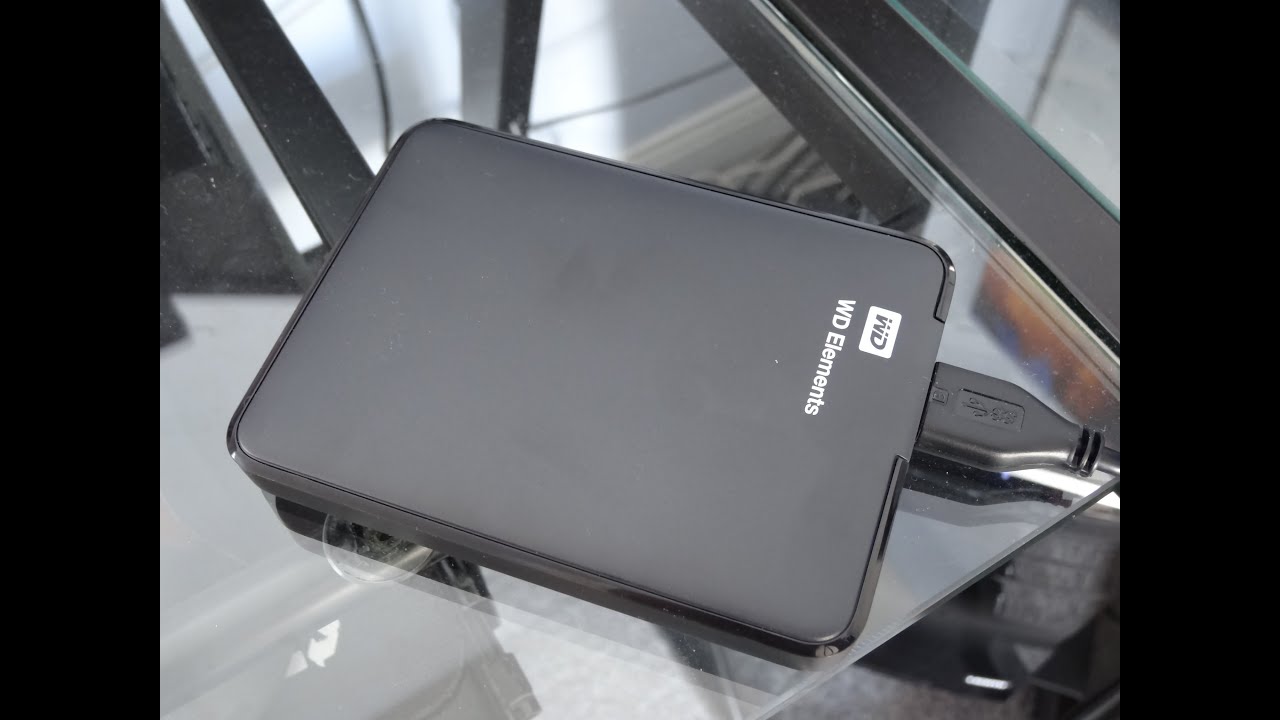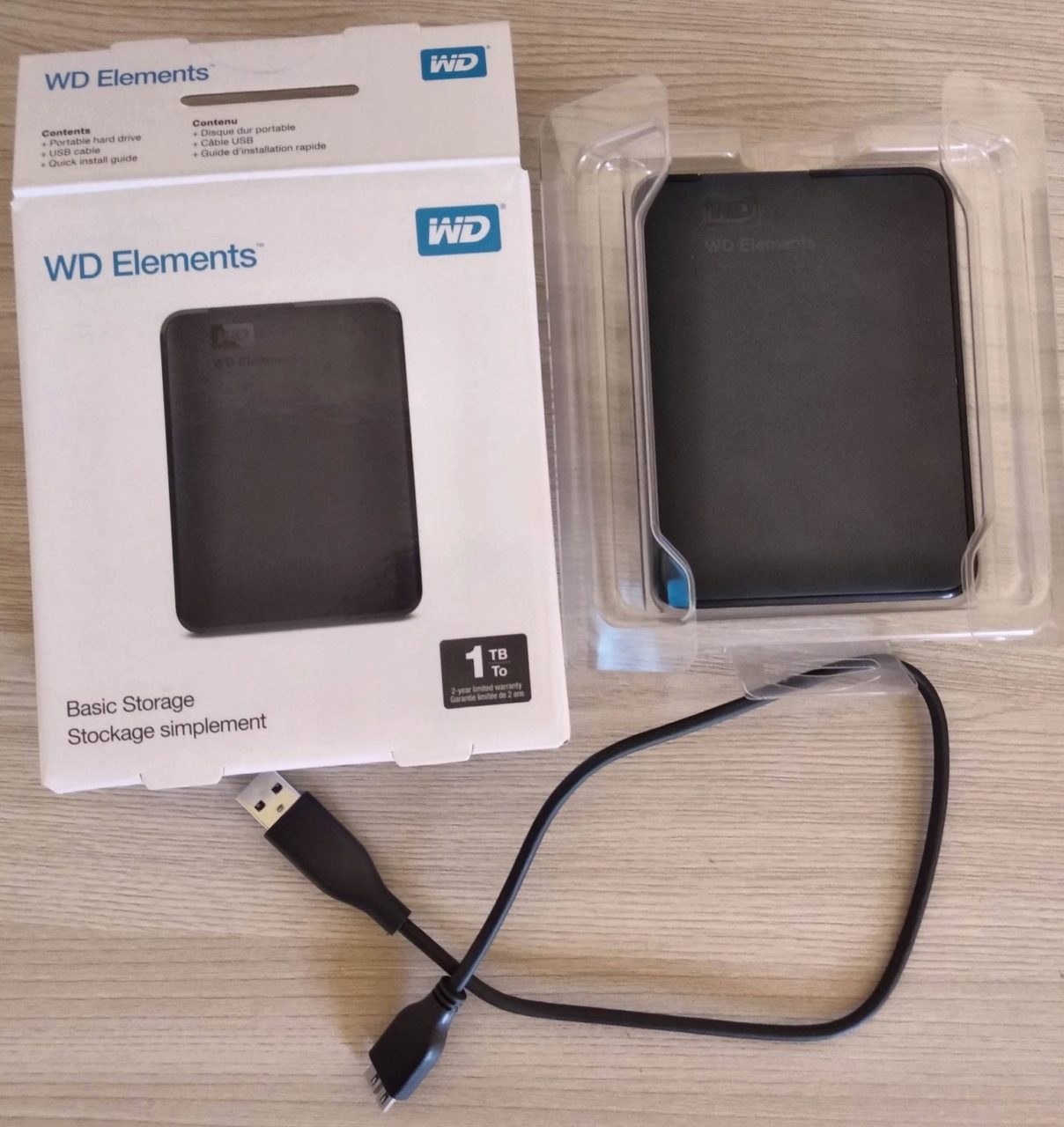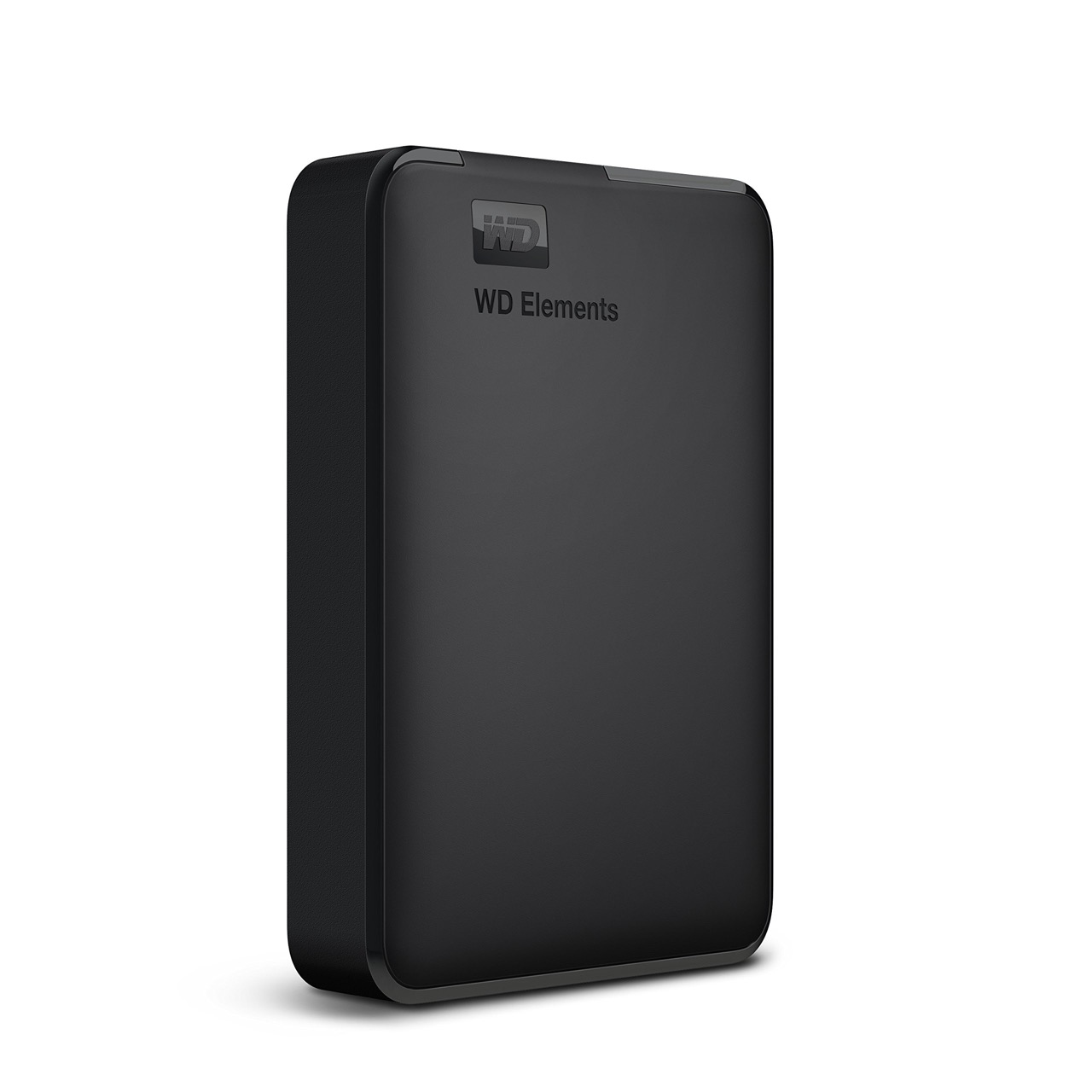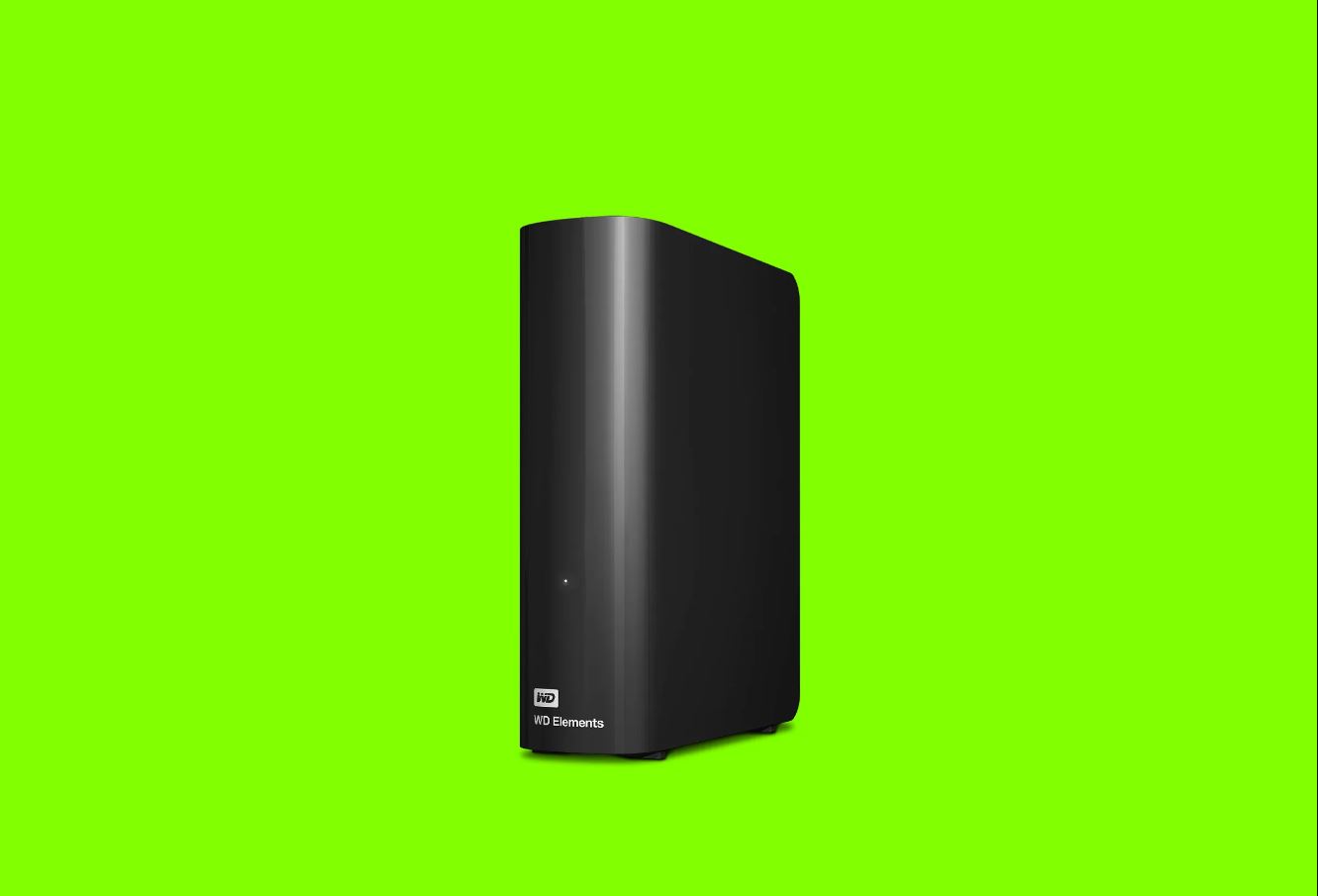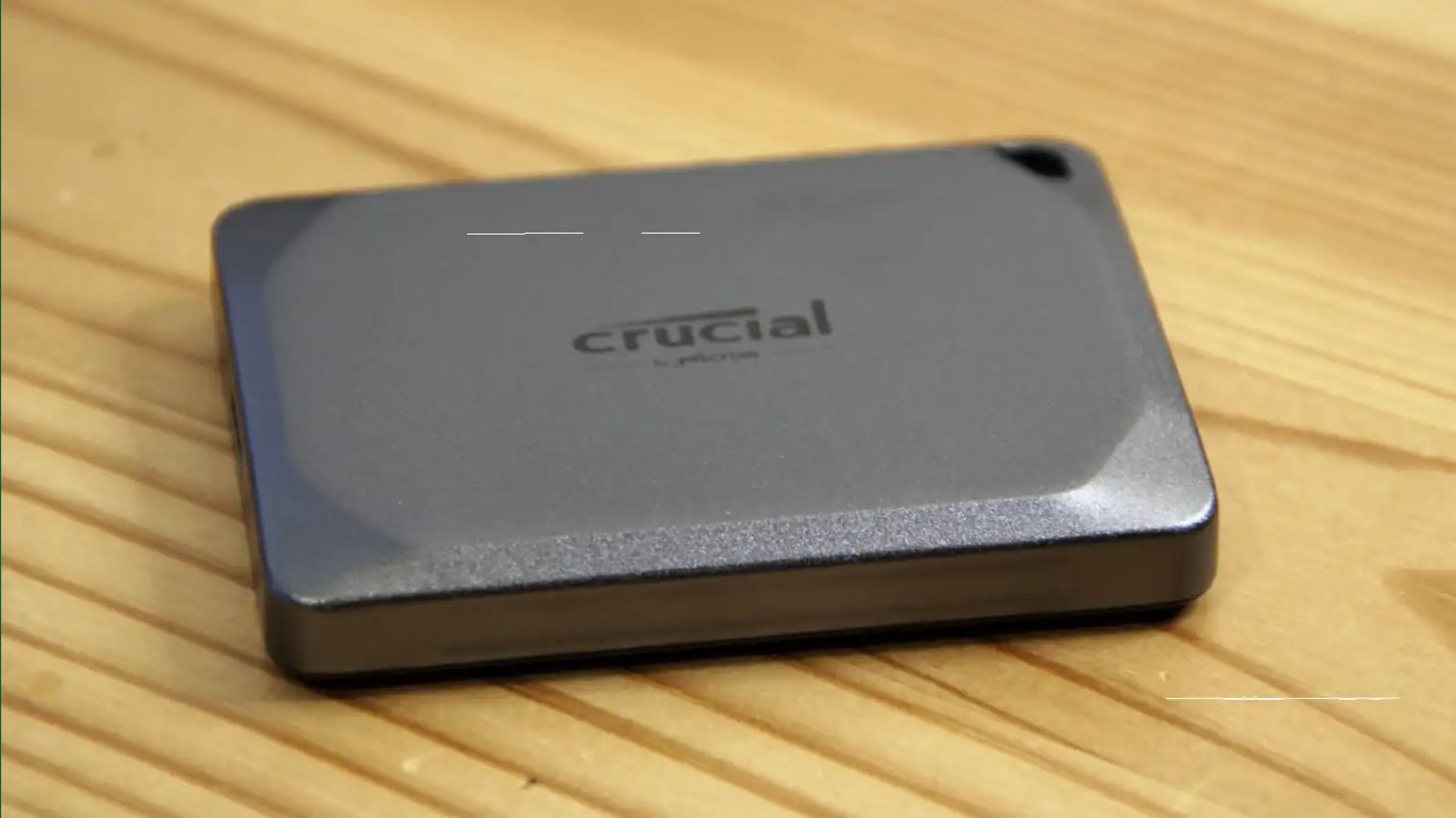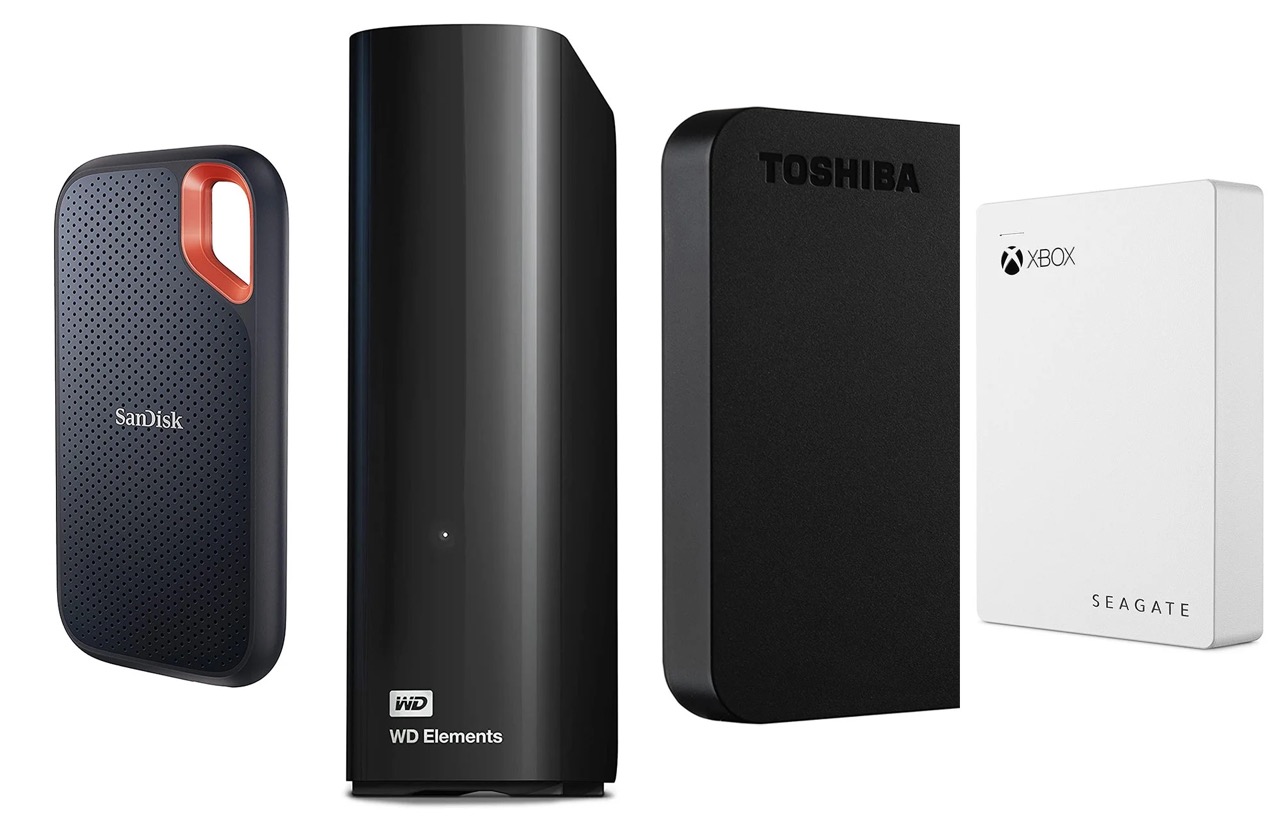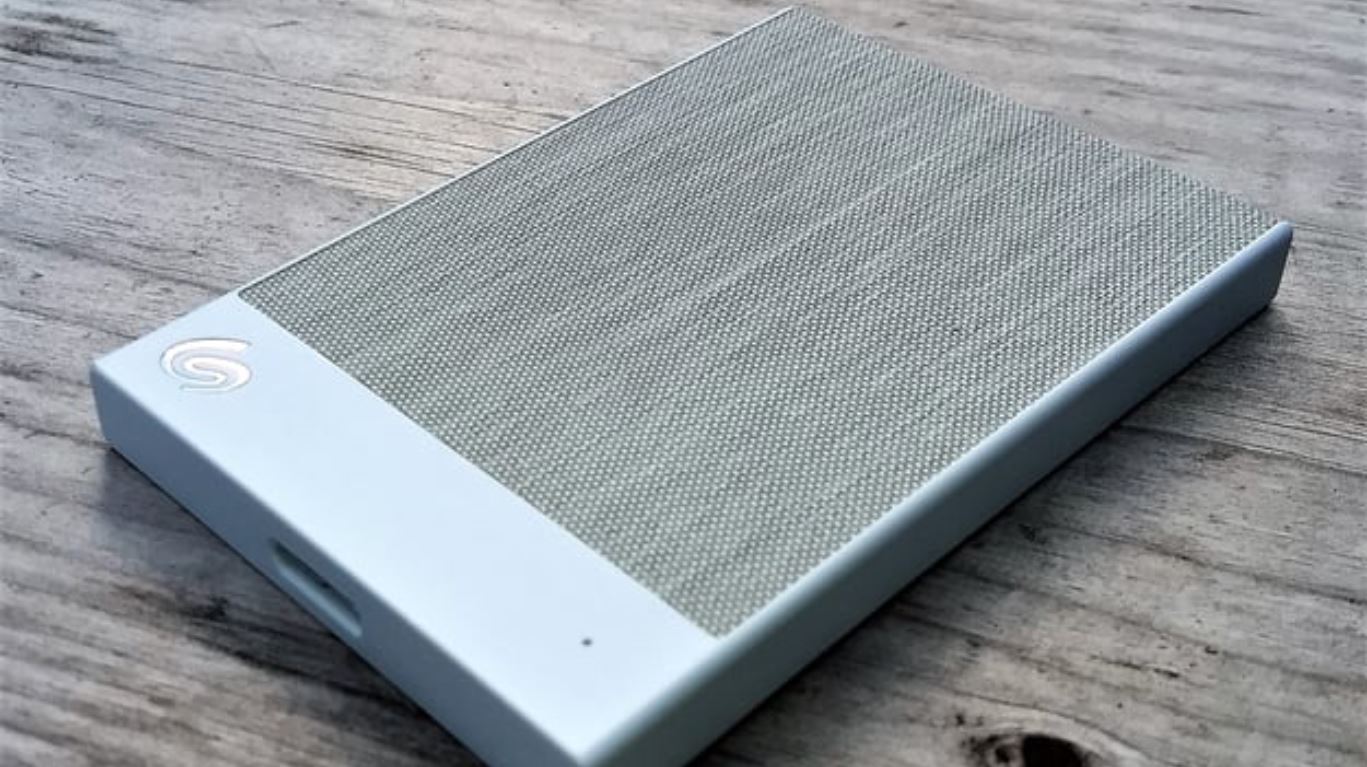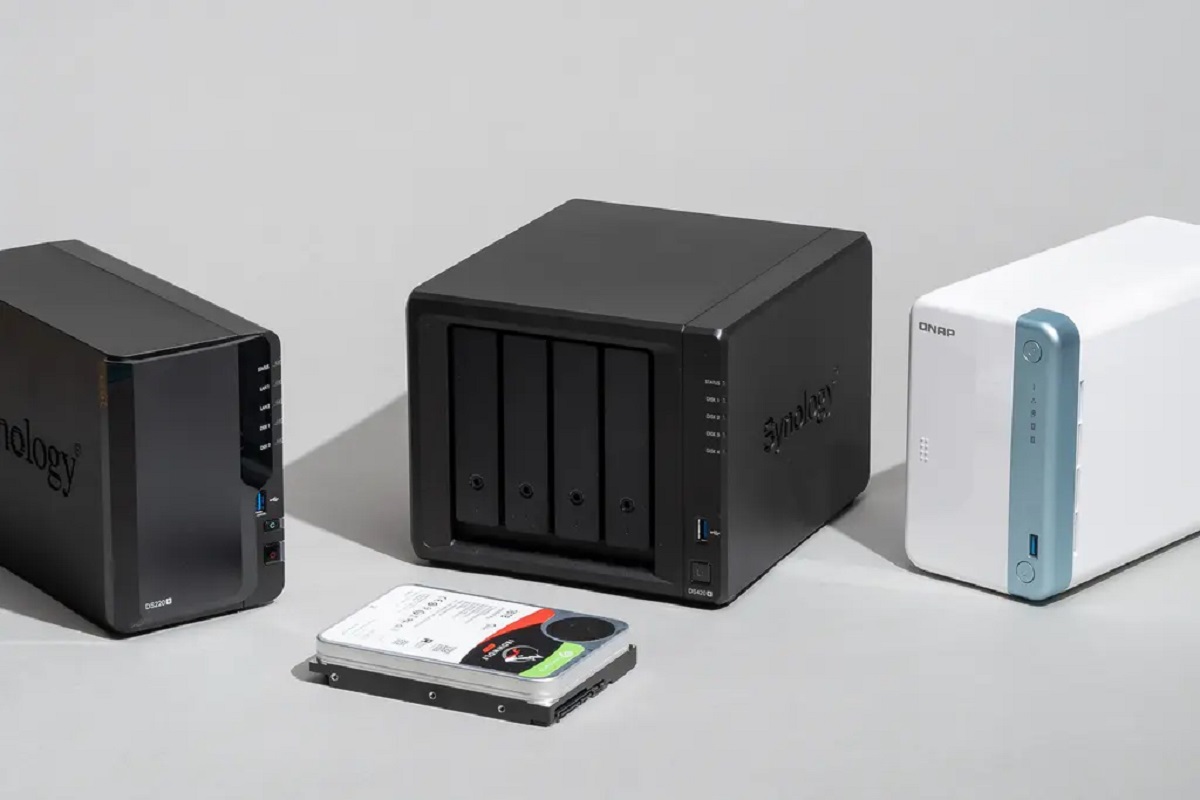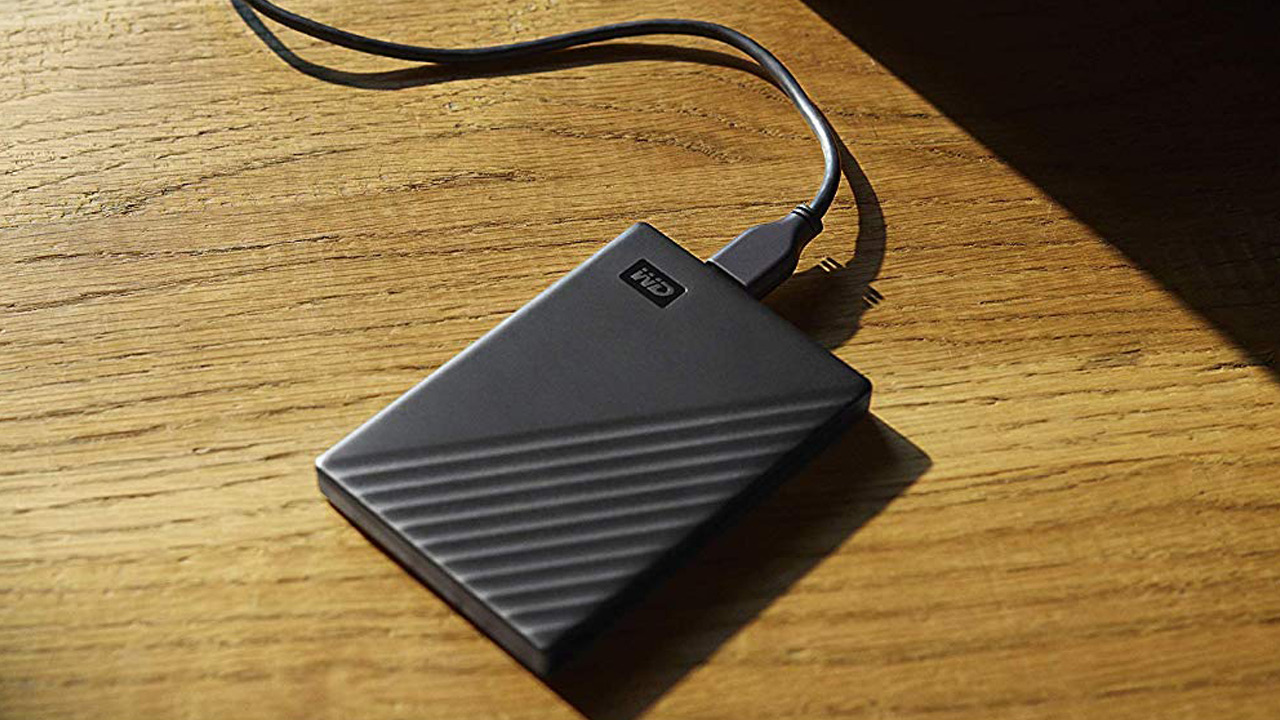Introduction
Welcome to our guide on how to use the WD Elements external hard drive! If you’re looking for a reliable and convenient solution to expand your storage capacity and easily transfer files between devices, the WD Elements external hard drive is an excellent choice. Whether you’re a student, professional, or simply someone who wants to keep their data secure, this guide will walk you through the step-by-step process of using the WD Elements external hard drive efficiently.
With its sleek design, plug-and-play functionality, and compatibility with both Windows and Mac operating systems, the WD Elements external hard drive offers the perfect blend of convenience and performance. Whether you need to store important documents, multimedia files, or create backups of your valuable data, this external hard drive will meet your needs. In this guide, we’ll cover everything from connecting the drive to your computer, formatting it for optimal performance, transferring files, and even troubleshooting common issues you might encounter along the way.
By the end of this guide, you’ll have a solid understanding of how to fully utilize the WD Elements external hard drive’s features and capabilities. So, let’s jump right in and get started on this exciting journey to expand and secure your digital storage!
Connecting the WD Elements External Hard Drive
Before you can start using your WD Elements external hard drive, you need to connect it to your computer. The process is straightforward and requires just a few simple steps:
- First, locate the USB port on your computer. It is usually found on the sides or back of the device.
- Take the USB cable that came with your WD Elements external hard drive and plug one end into the USB port on the computer.
- Next, take the other end of the USB cable and connect it to the USB port on the WD Elements external hard drive.
- Ensure that both ends of the USB cable are securely inserted to establish a stable connection.
Once you have connected the WD Elements external hard drive to your computer, the device should be recognized and installed automatically. You may hear a sound or see a notification on your screen indicating that a new device has been detected.
It is important to note that the WD Elements external hard drive is a plug-and-play device, meaning you don’t need to install any additional drivers or software to use it. The drive is compatible with both Windows and Mac operating systems, so regardless of the computer you’re using, the connection process remains the same.
Now that you have successfully connected your WD Elements external hard drive to your computer, you’re ready to move on to the next step: formatting the drive. Formatting ensures that the drive is properly set up and ready to be used for storing and transferring files.
Formatting the WD Elements External Hard Drive
Formatting your WD Elements external hard drive is an essential step to prepare it for use and optimize its performance. Here’s how you can format the drive:
- Open the “File Explorer” on Windows or “Finder” on Mac.
- Locate and select the WD Elements external hard drive from the list of available drives. Ensure that you have selected the correct drive to avoid formatting the wrong device.
- Right-click (Windows) or Ctrl-click (Mac) on the selected drive to open the context menu.
- From the menu options, choose the “Format” or “Erase” option.
- A formatting dialog box will appear, allowing you to customize the formatting options according to your preferences. You can typically choose the file system (such as NTFS for Windows or exFAT for cross-platform compatibility), allocation unit size, and volume name.
- Double-check the formatting settings to ensure they are in line with your needs.
- Click on the “Format” or “Erase” button to begin the formatting process. Note that formatting will erase all existing data on the drive, so make sure to back up any important files before proceeding.
- Wait for the formatting process to complete. The duration will vary depending on the size of the drive.
- Once the formatting is done, you will see a notification confirming that the drive has been successfully formatted.
After formatting, your WD Elements external hard drive is now ready to be used. It has been optimized to ensure compatibility with your operating system and provide reliable storage for your files.
Remember that formatting is a one-time process and usually not required unless you switch between operating systems or encounter specific issues with the drive. It is recommended to avoid formatting the drive frequently as it may result in unnecessary wear and tear.
With your WD Elements external hard drive formatted, you are now ready to start transferring files and utilizing the available storage space for your data storage needs.
Transferring Files to the WD Elements External Hard Drive
Now that your WD Elements external hard drive is properly connected and formatted, you can begin transferring files to it. Here are the steps to follow:
- Open the “File Explorer” on Windows or “Finder” on Mac.
- Navigate to the location of the files or folders that you want to transfer to the WD Elements external hard drive.
- Select the desired files or folders by clicking on them while holding the Ctrl key (Windows) or Command key (Mac). Alternatively, you can choose to copy and paste entire folders if needed.
- Once the files are selected, right-click (Windows) or Ctrl-click (Mac) on the selection, and choose “Copy” from the context menu.
- Go back to the “File Explorer” or “Finder” window, and locate the WD Elements external hard drive in the list of available drives.
- Right-click (Windows) or Ctrl-click (Mac) on the WD Elements external hard drive and select “Paste” from the menu options.
- The files will begin transferring to the WD Elements external hard drive. The duration will depend on the size and number of files being transferred.
- Ensure that the file transfer process completes successfully without any interruptions. Avoid disconnecting the external hard drive or shutting down the computer during the transfer to prevent data loss or corruption.
- Once the file transfer is complete, you can safely remove the WD Elements external hard drive from your computer.
Transferring files to the WD Elements external hard drive provides a convenient and reliable way to free up space on your computer’s internal storage and keep your files organized. It also allows for easy access to your files from different devices, making it a versatile storage solution.
Remember to periodically backup the files on your WD Elements external hard drive to ensure you have an extra copy in case of any unexpected data loss.
With the files successfully transferred to the WD Elements external hard drive, you can now enjoy the benefits of having ample storage space and the ability to access your files whenever you need them.
Using the WD Elements External Hard Drive for Backup
The WD Elements external hard drive is an excellent option for creating backups of your important files and ensuring the safety of your data. Here’s how you can use it for backups:
- Connect the WD Elements external hard drive to your computer following the steps mentioned in the first section of this guide.
- Open the backup software or utility provided by your operating system or use a third-party backup software of your choice.
- Select the files or folders that you want to include in the backup. You can choose to manually select specific files or set up an automatic backup schedule to ensure regular backups.
- Choose the WD Elements external hard drive as the destination for the backup. You may need to specify the drive letter or the exact location where the backup should be stored.
- Configure any additional backup settings, such as encryption, compression, or versioning, based on your preferences and requirements.
- Start the backup process and let the software copy the selected files to the WD Elements external hard drive. The duration will depend on the size and number of files being backed up.
- Once the backup is complete, verify the integrity of the backup files by checking if they are accessible and intact.
Regularly creating backups using the WD Elements external hard drive helps protect your data from loss or damage. It serves as an extra layer of security in case of accidental deletion, hardware failure, or other unforeseen events.
Remember to update your backups periodically to ensure that all your important files are included and to accommodate any changes or additions you make over time.
In addition to manual backups, consider utilizing automated backup software that allows you to set up scheduled backups, ensuring that your data is constantly protected without the need for manual intervention.
With the WD Elements external hard drive serving as your backup solution, you can have peace of mind knowing that your valuable files are safe and easily recoverable.
Safely Ejecting the WD Elements External Hard Drive
When you finish using the WD Elements external hard drive and want to disconnect it from your computer, it’s essential to follow the proper procedure to avoid data loss or corruption. Here’s how you can safely eject the WD Elements external hard drive:
- Ensure that all file transfer and backup processes are complete. Wait for any ongoing file operations to finish before proceeding.
- Locate the WD Elements external hard drive icon on your computer’s desktop or in the “File Explorer” (Windows) or “Finder” (Mac) window.
- Right-click (Windows) or Ctrl-click (Mac) on the icon to open the context menu.
- Select the “Eject” or “Safely Remove” option from the menu.
- Wait for a confirmation message or notification that it is safe to remove the WD Elements external hard drive.
- Once you receive the confirmation, you can physically disconnect the USB cable from your computer.
- Ensure that you remove the USB cable gently and avoid pulling or yanking it to prevent damage to the drive or USB port.
Ejecting the WD Elements external hard drive before physically removing it ensures that all pending read/write operations are completed, and the file system is properly closed. This helps prevent data loss or corruption that can occur if the drive is disconnected abruptly.
It is essential to note that removing the WD Elements external hard drive without ejecting it first may lead to data instability and potential damage to the drive. Therefore, always follow the proper procedure to safeguard your data.
By safely ejecting the WD Elements external hard drive, you can maintain the integrity of your files and ensure that they are readily accessible the next time you connect the drive to your computer.
Troubleshooting Common Issues with the WD Elements External Hard Drive
While the WD Elements external hard drive is a reliable and user-friendly device, you may encounter some common issues during its usage. Here are some troubleshooting steps to help you resolve these issues:
1. Device Not Recognized: If your computer does not recognize the WD Elements external hard drive, try these steps:
- Ensure that the USB cable is securely connected to both the drive and the computer.
- Try connecting the drive to a different USB port on your computer.
- Check device manager (Windows) or System Information (Mac) for any unrecognized device or driver issues.
2. Slow Transfer Speed: If file transfer to or from the WD Elements external hard drive is slow, consider these solutions:
- Check for any background processes or applications consuming system resources.
- Verify that the USB port you are using supports high-speed data transfer.
- Ensure that the USB cable you are using is in good condition and meets the required specifications.
3. File System Compatibility: If you need to use the WD Elements external hard drive with both Windows and Mac computers, make sure it is formatted with the exFAT file system. This allows for cross-platform compatibility and seamless file sharing.
4. Data Corruption or Loss: If you suspect data corruption or loss on the WD Elements external hard drive, try these steps:
- Run a disk check or repair utility provided by your operating system to identify and fix any file system errors.
- Use data recovery software to attempt to retrieve any lost or corrupted files, but avoid overwriting data on the drive to maximize the chances of successful recovery.
5. External Drive Not Powering On: If the WD Elements external hard drive is not powering on, consider the following:
- Check that the power adapter is securely connected to the drive and the electrical outlet.
- Test the power adapter with another device or try using a different power adapter if available.
If the above troubleshooting steps do not resolve your issue, it is recommended to contact the WD Elements support team or consult the user manual for further assistance.
By troubleshooting common issues that may arise with the WD Elements external hard drive, you can ensure its optimal performance and uninterrupted usage for all your data storage needs.
Conclusion
Congratulations! You have reached the end of our guide on how to use the WD Elements external hard drive. Throughout this guide, we have covered the essential steps to connect, format, transfer files, create backups, safely eject, and troubleshoot common issues with the WD Elements external hard drive.
The WD Elements external hard drive offers a reliable and convenient solution for expanding your storage capacity, organizing your files, and ensuring the safety of your valuable data. Its plug-and-play functionality, compatibility with different operating systems, and user-friendly design make it an ideal choice for both professional and personal use.
Remember to always connect and disconnect the WD Elements external hard drive properly to prevent any data loss or corruption. Regularly back up your important files to ensure their safety and consider using automated backup software to streamline the process.
If you encounter any issues or face challenges while using the WD Elements external hard drive, refer to the troubleshooting section of this guide or consult the WD support team for assistance.
We hope that this guide has provided you with the necessary knowledge and confidence to make the most of your WD Elements external hard drive. Whether you need to store important documents, multimedia files, or create backups, the WD Elements external hard drive is ready to meet your storage needs.
Thank you for reading, and happy storing!







